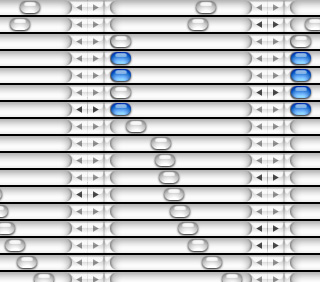Splash art originated in the 1940s in comics, where the term referred to a full page of visuals at the front of a book. Pages were designed to engage the reader's imagination along the lines of the comic's broader concept, while standing independent from the narrative. In the late 1990s, when the widespread use of the application Flash opened up new possibilities for animation and interactive media, the idea of the splash page migrated to web design. Online splash art brought visual excitement to a webpage when low modem speeds made it impractical to post large or moving images amid a site's textual content.
Rhizome introduced splash pages to its web site in 1998 in order to display artwork with greater immediacy....
Rhizome introduced splash pages to its web site in 1998 in order to display artwork with greater immediacy....
Launch Project 
 Untitled, 1998
Untitled, 1998
About
Maciej Wisniewski takes the scroll bar, a basic unit of the online interface, then multiplies it and arranges it in a playful system, where some bars determine the movement of the rest, while others remain immobile. Wisniewski is an artist and programmer. A year after making this splash art, he launched netomat, an open, free-form and flexible alternative to traditional page-based HTML browsers and search engines that he called a "post-browser." It became the foundation of Wisniewski's software company. More than a formal study of scroll-bar design, Wisniewksi's splash art reflects his concern with the limitations of the browser interface by transposing a functional viewing tool to a nonfunctional context.
www.netomat.net
www.netomat.net